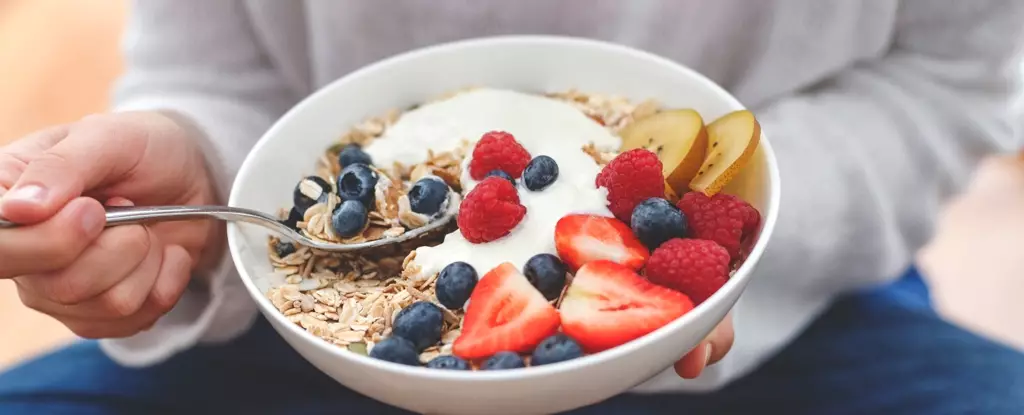In recent years, the focus on microbial inhabitants of the human gut has sparked a groundbreaking transformation in nutritional science. Traditionally, the spotlight was on macronutrients like proteins, fats, and carbohydrates, but now, dietary fiber has emerged as a crucial player in our health narrative. As studies unveil the intricate role of gut microorganisms in digestion and overall well-being, fiber supplements are becoming ubiquitous in our diets. They are often marketed as the next miracle ingredient, especially as we strive to improve health outcomes through dietary changes.
Nonetheless, while dietary fiber has earned a reputation as the “new protein,” enthusiasm must be tempered by a close examination of recent findings, particularly a compelling study from 2024 that draws attention to the nuances of various fiber types. It turns out that not all fibers are created equal, and the impact of specific fibers like beta-glucan could redefine our approach to dietary supplementation and weight management.
The Insights from Recent Research
In a pioneering investigation led by researchers from the University of Arizona and the University of Vienna, a critical distinction surfaced: beta-glucan, a fiber prevalent in oats and barley, displayed remarkable benefits for weight management and blood sugar control among test mice. Throughout an 18-week study, mice consuming a high-fat diet supplemented with beta-glucan not only exhibited reduced body weight and fat content but also reflected improved metabolic health. This significant finding starkly contradicts other fiber types such as wheat dextrin and pectin, which, despite shifting gut microbiota profiles, failed to exert similar effects on body composition.
The inadequacies of generalizing all fibers under one umbrella became glaringly evident through this study. Biomedical scientist Frank Duca articulated a growing concern in the fiber landscape: the bewildering variety of fiber types renders effective dietary guidance challenging for consumers and the agricultural industry alike. This critical inquiry into fiber specificity puts a spotlight on the need for rigorously structured research that can identify which fibers yield the most benefits.
A Closer Look at Beta-Glucan
The merit of beta-glucan can be attributed not only to its biochemical properties but also to its interaction with the gut microbiome. The study revealed that beta-glucan significantly increased the abundance of a specific bacterium, Ileibacterium. Previous studies have established a link between this bacterium and weight loss, underscoring beta-glucan’s role in fostering a microbiome that promotes metabolic health.
Studies extending previous findings confirmed that beta-glucan-rich foods like barley flour induced similar positive outcomes in other rodent populations, suggesting a broader applicability of these results. Remarkably, even when subjected to a high-fat diet, these rodents maintained healthy weight levels due to surprising increases in energy expenditure. However, the relationship between beta-glucan intake and the modulation of energy metabolism remains an area ripe for further exploration.
Understanding Fiber Diversity
One challenge that arises from the dietary fiber revolution is the sheer diversity of fibers and their varied roles in human health. Soluble fibers, like beta-glucan and wheat dextrin, dissolve in water and can be easily fermented by gut bacteria, leading to a rich landscape of metabolic activities. In contrast, insoluble fibers such as cellulose contribute to stool formation but offer different benefits and mechanisms of action.
This diversity highlights the importance of personalized nutrition strategies that recognize individual variations in gut microbiomes and how we respond to specific fiber types. While the focus on quantity—advocating for at least 25 to 30 grams of fiber daily—is undoubtedly important, the quality and type of fiber may hold the key to maximizing health benefits.
The Future of Dietary Fiber Research
The findings from the recent studies prompt a compelling question: How can this research be translated into actionable dietary guidelines? Although we are witnessing a renaissance in fiber research, the insights gained indicate that a one-size-fits-all approach will not suffice in addressing the complexities of dietary fiber and its effects on weight loss and insulin regulation.
While the scientific community advises caution before generalizing findings from animal studies to human applications, the burgeoning understanding of fibers like beta-glucan provides hope for more effective dietary interventions. As we move toward a more nuanced comprehension of the interplay between diet, gut microbiota, and overall metabolic health, the vision of personalized nutrition strategies tailored around gut health and fiber type could soon transition from aspiration to reality.
The imperative remains: as we embrace the new age of nutritional science, let us not simply add more fiber to our diets but rather select the right fibers that hold the promise of better health outcomes and wellbeing.

